20 Most Notable Whale Species & Their IUCN Conservation Status
Whales are magnificent mammals and just to get a glimpse of these gentle giants is a sight to behold. The commercialization of whaling business is endangering their existence as a whole.
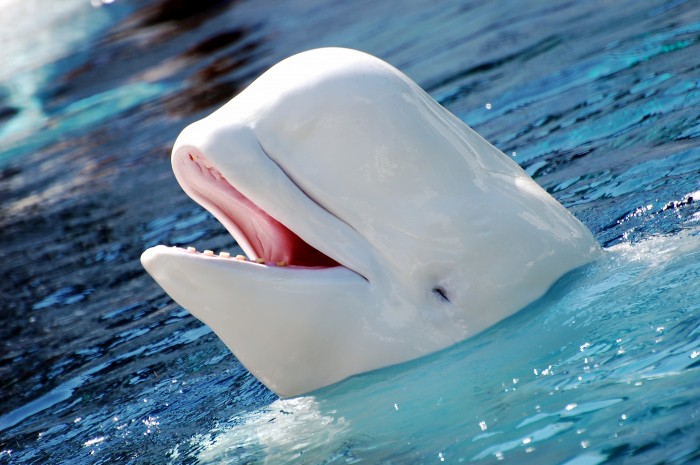
 These 20 species of Whale featured in this article are from different regions but one classification brought them together in this single article here, which the threat to their existence.
These 20 species of Whale featured in this article are from different regions but one classification brought them together in this single article here, which the threat to their existence.
The poachers or commercial whalers are not the only ones to blame but we as people that refuse to learn about these endangered species are the larger part of the reason for their extinction.
“To witness something wrong and not doing something about it, makes you an accomplice of that wrong”
1) Blue Whale - Balaenoptera Musculus
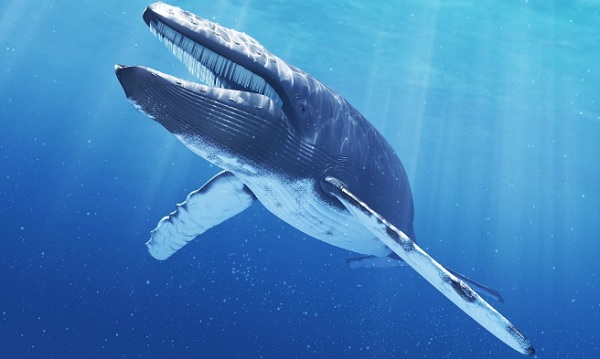
The blue whale is the largest animal ever known to have existed. During the 20th century, the species was almost exterminated due to commercial whaling.

The blue whale has a truly global distribution, occurring in all oceans except the Arctic, and enclosed seas. But despite this, they are one of the rarest of the whales, numbering between 10,000-25,000. Most biologists consider them to be among the most endangered of the great whales. [1.1]
2) Fin Whale - Balaenoptera Physalus
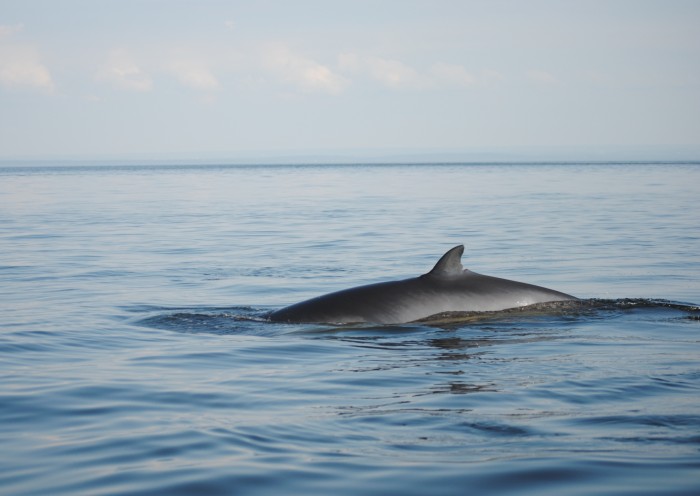
The fin whale, the second largest living mammal, has been severely impacted worldwide by commercial whaling. Nearly 750,000 animals were killed in areas of the Southern Hemisphere alone between 1904 and 1979, and they are rarely seen there today.

Their current status is endangered in most areas outside of the North Atlantic. [1.2]
3) Sei Whale - Balaenoptera Borealis
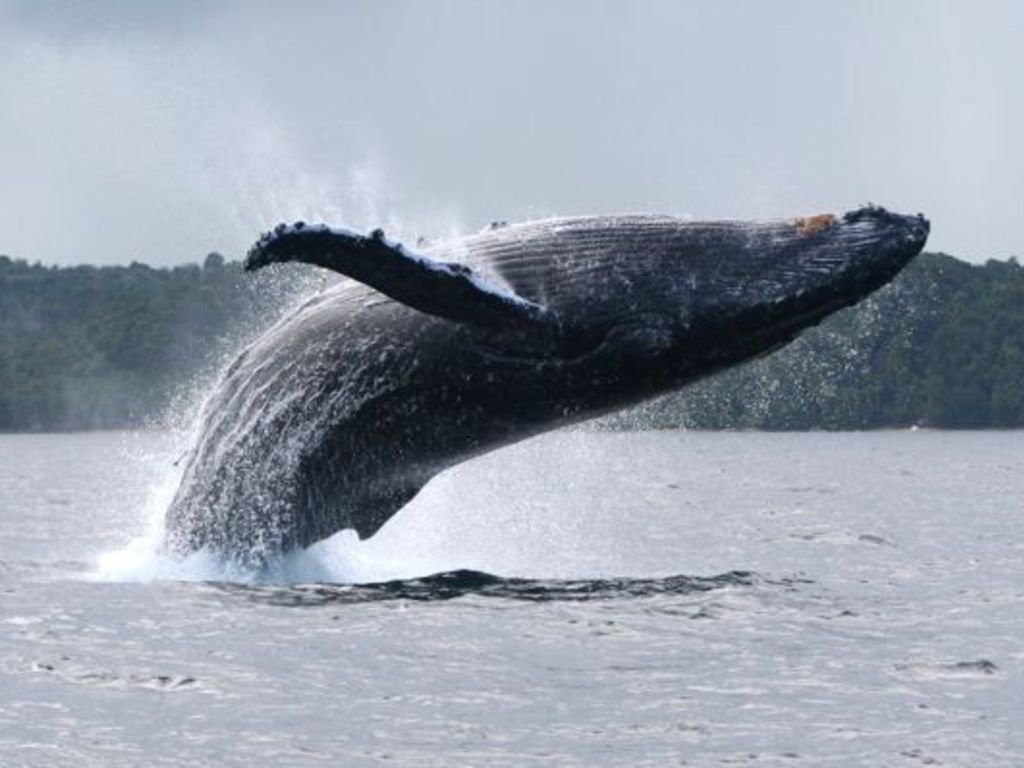
This fast cetacean inhabits all oceans and adjoining seas except in tropical and polar regions. The sei whale became a major target for commercial whaling after the preferred stocks of blue and fin whales had been depleted.

The species was intensively exploited worldwide after blue and fin whale stocks had been reduced, resulting in endangered IUCN status. Evidence shows that the stocks of sei whales were depleted before they were protected from commercial whaling in the 1970s and 1980s. The global mature population is estimated to have declined by about 80% over the last three generations. [1.3]
4) Humpback Whale - Megaptera Novaeangliae
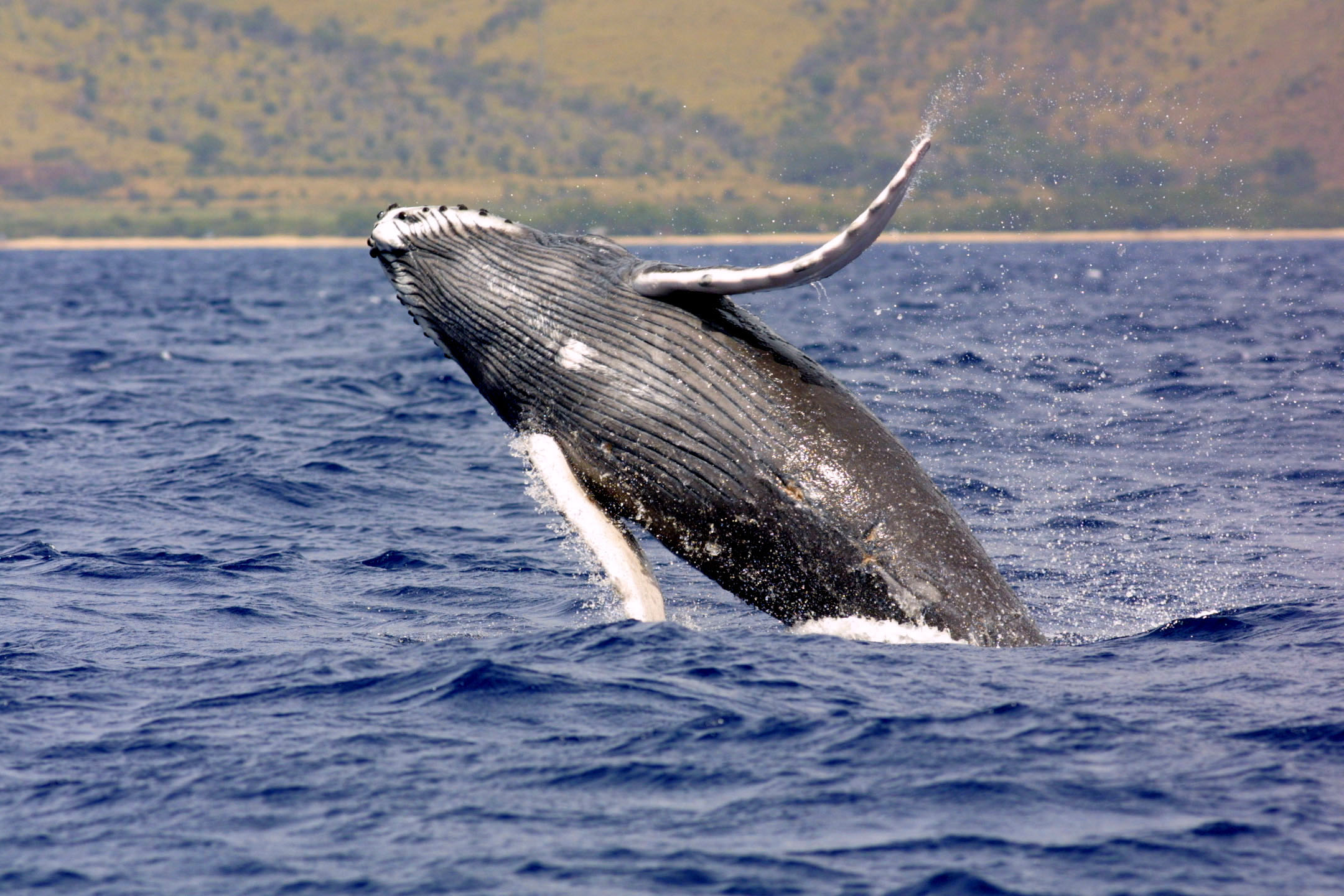
Humpback whales are well known for their long "pectoral" fins, which can be up to 15 feet (4.6 m) in length. Their scientific name, Megaptera novaeangliae, means "big-winged New Englander" as the New England population was the one best known to Europeans. These long fins give them increased maneuverability; they can be used to slow down or even go backwards.

Humpback’s IUCN status is “Least Concern” [1.4]
5) Bowhead Whale - Balaena Mysticetus
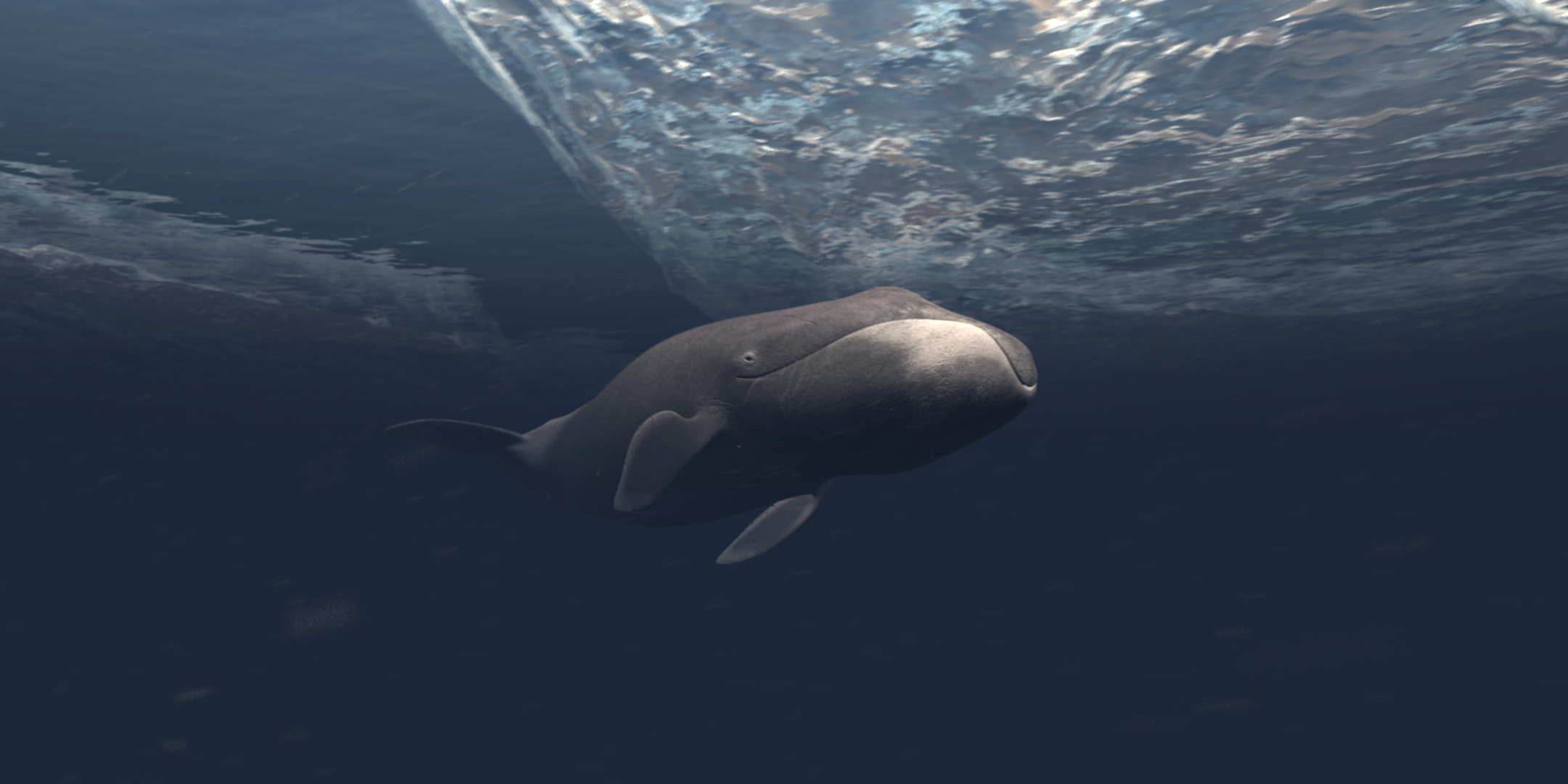
Bowheads are a large baleen (mysticete) whale. They are short and broad like all members of the right whale family. They are dark grey on the back and lighter on the belly. Bowheads have elevated nostrils and no dorsal fin. They weigh 75,000 – 100,000 kg and females are slightly larger than males.

The bowhead whale’s conservation status is listed as “least concern” overall, but some populations (such as the East Greenland-Svalbard population) are “endangered”. They have traditionally been hunted by commercial whalers until the last century for oil, meat, and baleen. [1.5]
6) North Atlantic Right Whale - Eubalaena Glacialis
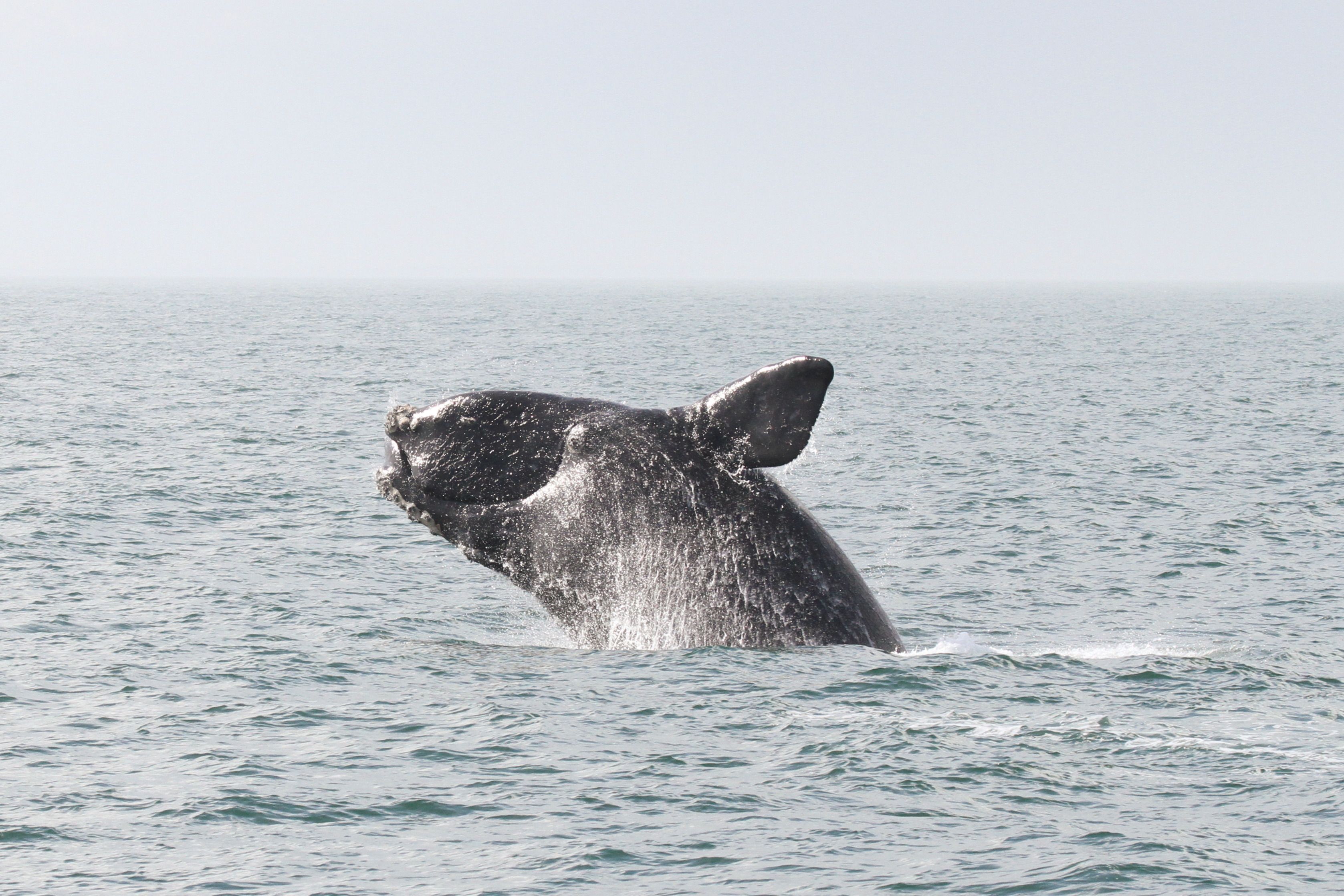
Stretching up to 16.8 meters (55 feet) long and weighing up to 62 tons (70 tons), the North Atlantic right whale is one of the world’s largest animals—and one of the most endangered whales. Scientists estimate that between 300-400 individuals remain. [1.6]

7) Southern Right Whale - Eubalaena Australis
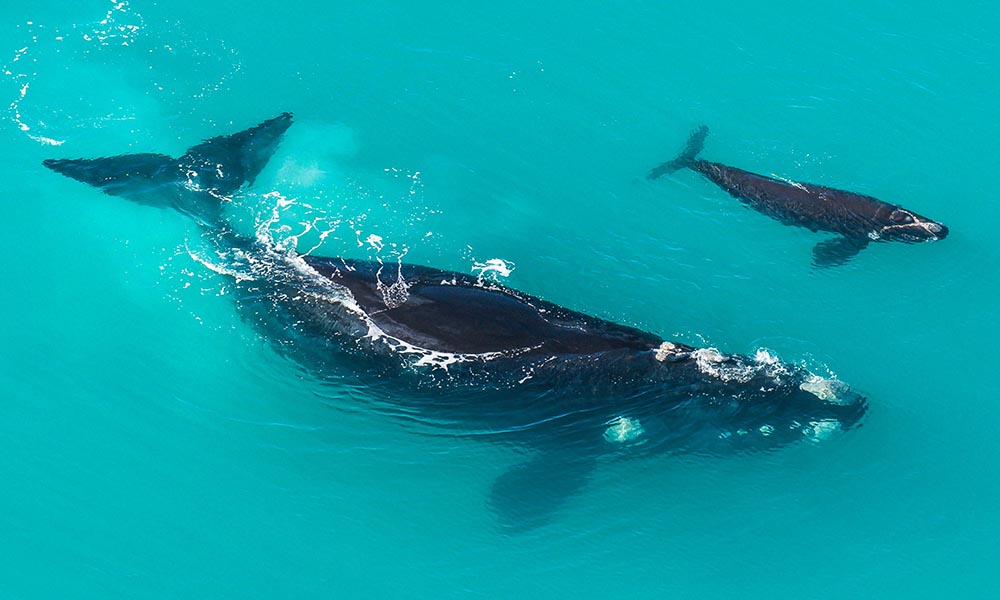
Southern right whales have many outstanding characteristics - the most notable perhaps being that they have the largest testes in the animal kingdom - with each pair weighing a tonne. They also have a large head, which is about a quarter of their body length with a strongly arched mouth. Inside this mouth are long, narrow baleen plates on either side of the upper jaw.

The species is listed as endangered under the Australian Environmental Protection and Biodiversity Conservation Act, as nationally endangered under the New Zealand Department of Conservation Threat Classification System. [1.7]
8) North Pacific Right Whale - Eubalaena Japonica
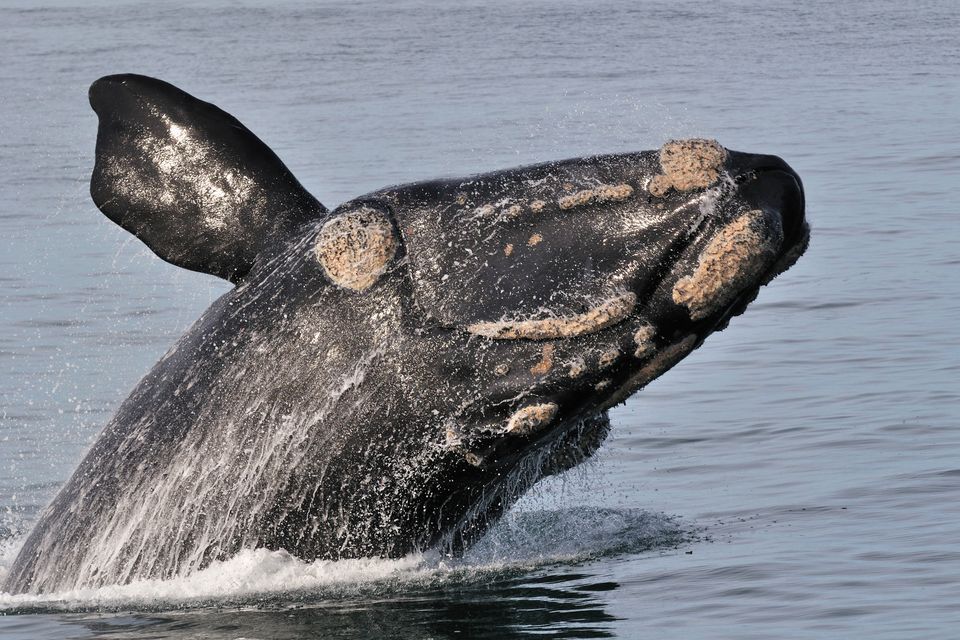
The North Pacific right whale is a giant, growing to over 18 metres in length, and probably in excess of 80 tons in weight. In common with other Balaenidae species, the head of the North Pacific right whale can take up to one third of the body length, and appears almost disproportionately large.

In 2008, researchers have listed the endangered northern right whale (Eubalaena spp.) as two separate, endangered species, North Pacific right whale (E. japonica) and North Atlantic right whale. [1.8]
9) Bryde's Whale - Balaenoptera Brydei
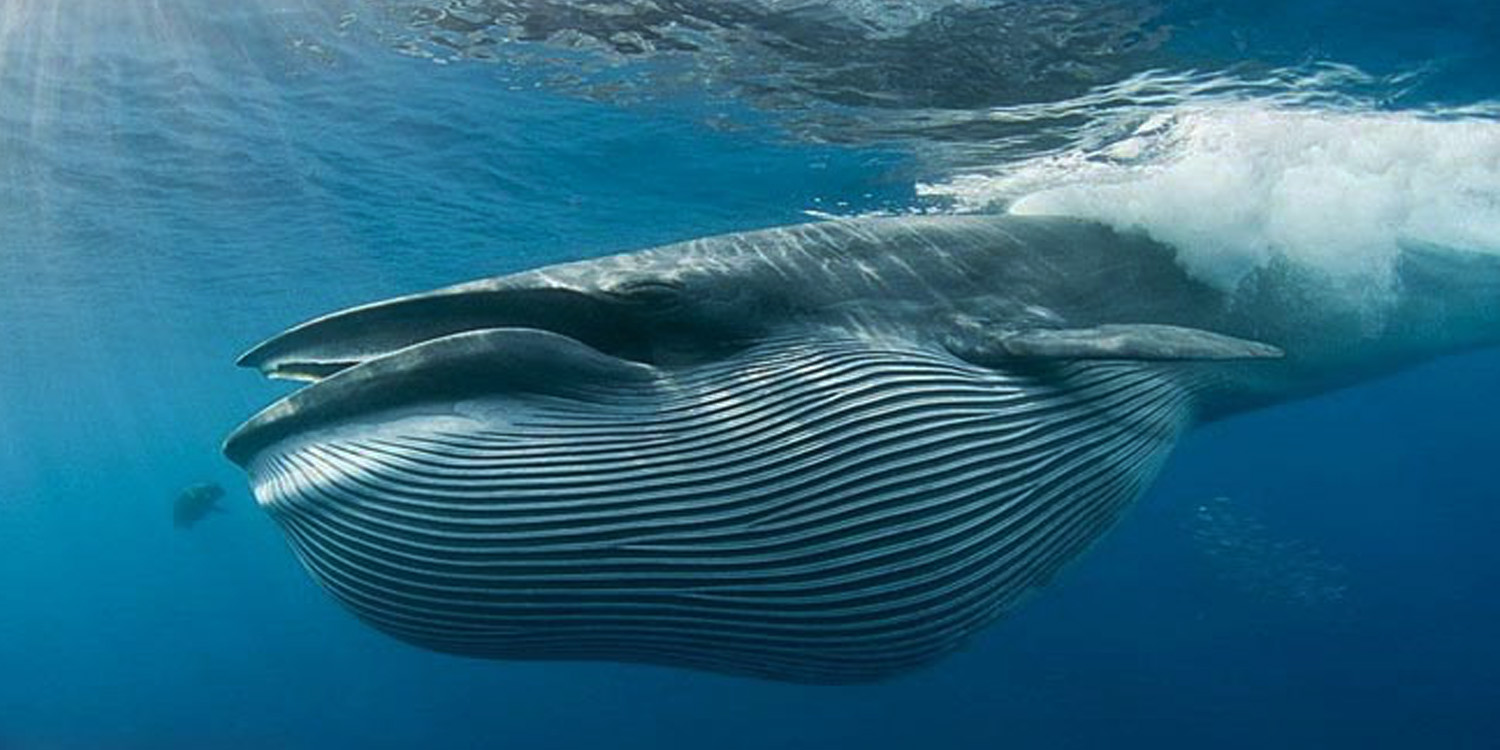
Bryde's whale is a baleen whale, more specifically a rorqual belonging to the same group as blue whales and humpback whales. It has twin blowholes with a low splashguard to the front. Like other rorquals, it has no teeth, but has two rows of baleen plates.

The identity and number of species in the "Bryde's Whale complex" is still unclear. The IUCN status of Bryde’s whale is “Data Deficient” [1.9]
10) Omura's Whale - Balaenoptera Omurai
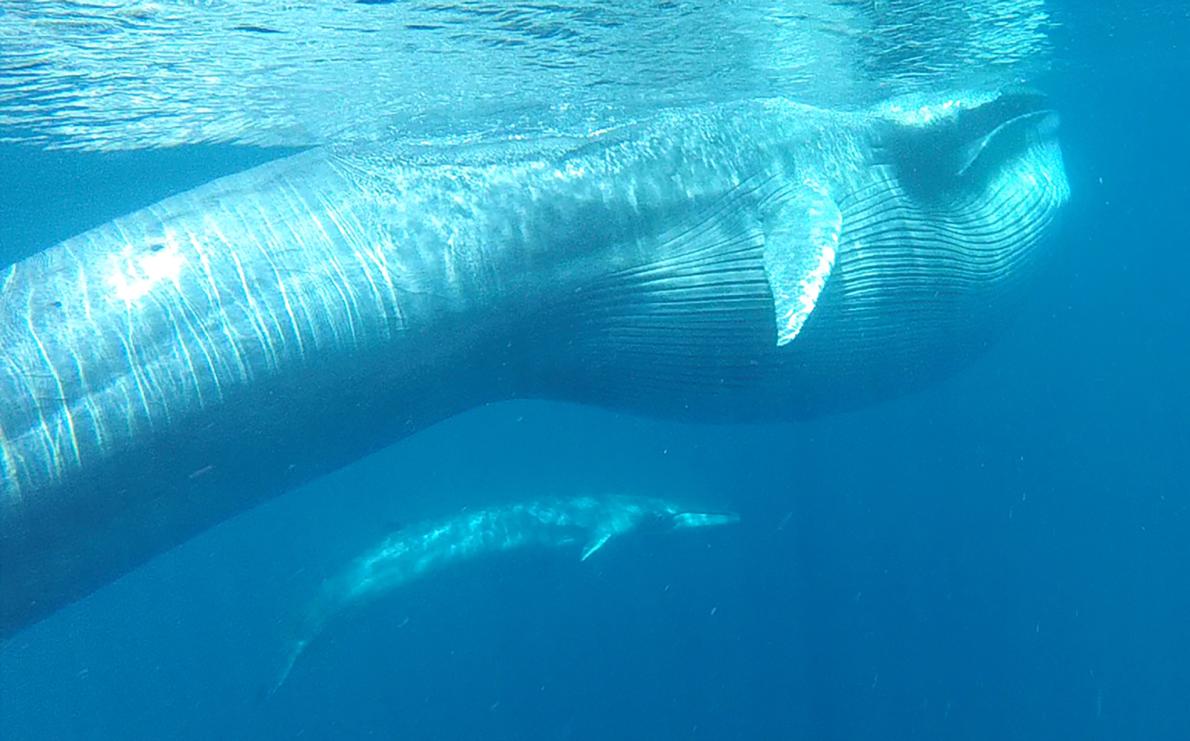
Omura's whale has only recently been described and classified as a separate species. Prior to 2003, the Omura's whale was previously and incorrectly thought to be a pygmy form of the Bryde's whale.
A slender bodied whale, smaller than Bryde's, sei, fin and minke whales, it is thought to differ in body shape from other baleen whales but similar in colouration to fin whales including an asymmetrical lower jaw – white on the right-hand side, dark on the left.

Their IUCN conservation status is unclear because of the Data Deficiency. [1.10]
11) Gray Whale - Eschrichtius Robustus
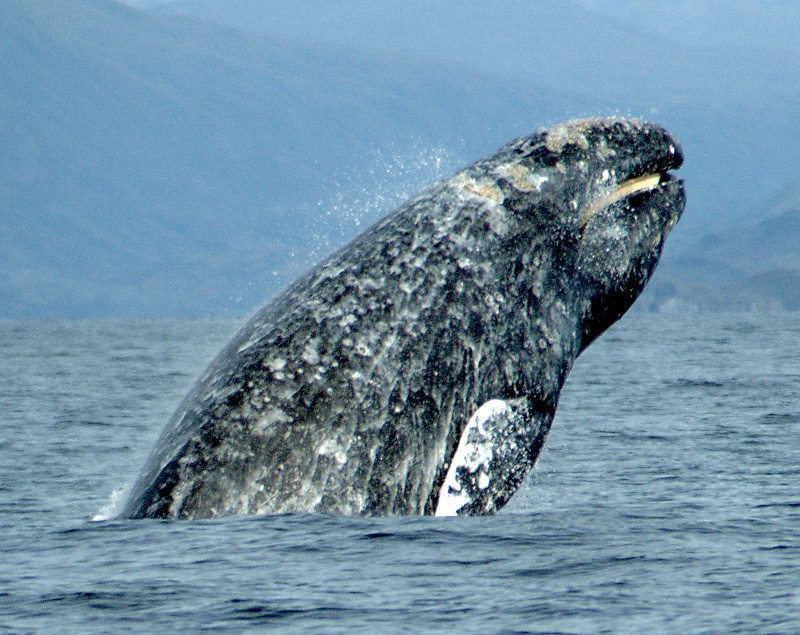
Gray whales are mysticetes, or baleen whales. Gray whales are the only species in the family Eschrichtiidae. These large whales can grow to about 50 feet (15 m) long, and weigh approximately 80,000 pounds (35,000 kg). Females are slightly larger than males.

As of 2008, the IUCN regards the gray whale as being of "Least Concern" from a conservation perspective. However, the specific subpopulation in the northwest Pacific is regarded as being "Critically Endangered". The northwest Pacific population is also listed as endangered by the U.S. government’s National Marine Fisheries Service under the U.S. Endangered Species Act. [1.11]
12) Common Minke Whale - Balaenoptera Acutorostrata
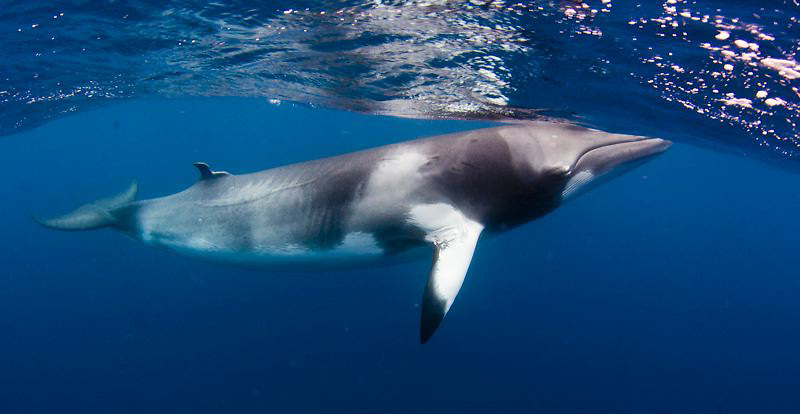
Minke whales are the smallest and most abundant of the rorqual whales. They have a sharply pointed snout, straight mouth line and a long ridge along the head with two blowholes. They have hundreds of baleen plates 20 to 30cm long growing from their upper jaws and between 50 and 70 pleats running from their throat and ending just past their flippers.

The common minke whale is considered "Least Concern" on the IUCN red list. [1.12]
13) Antarctic Minke Whale - Balaenoptera Bonaerensis
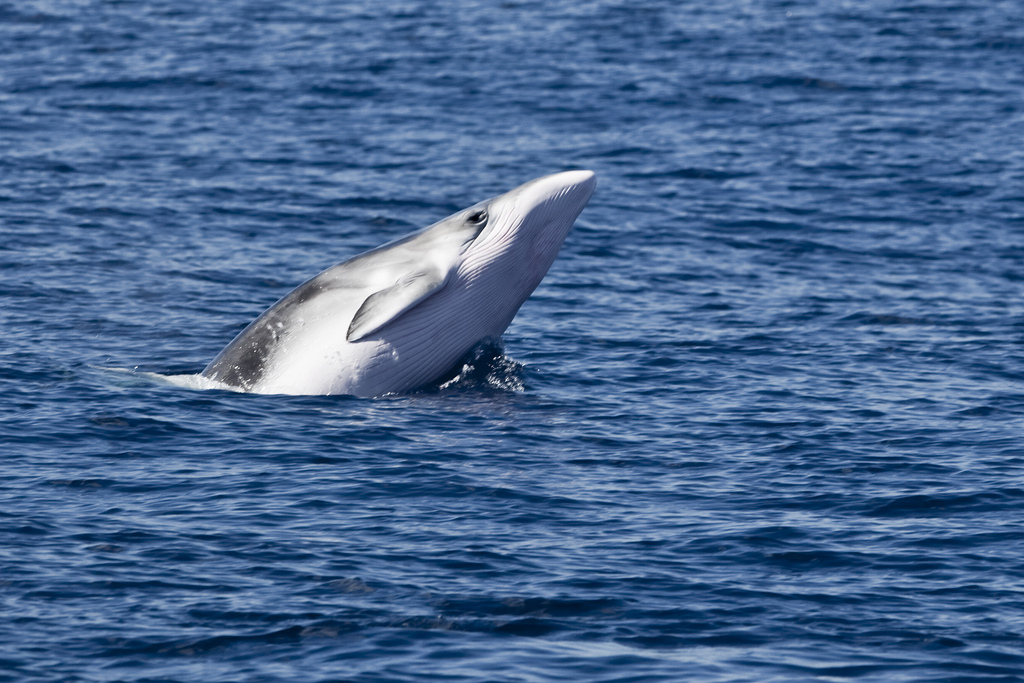
The Antarctic minke whale is one of seven species of baleen whales that are also called rorquals. The word rorqual is Scandinavian in origin—some say Norwegian and others say Danish—and depending on where you hear it, it can mean wrinkled or furrowed, tubed or pleated. In any case, it refers to the expandable throat grooves on the whales underside that allow them to take in massive gulps of seawater and prey while expelling the water out through the baleen, trapping the prey against the inner surface and allowing it to wash down the digestive tract.

The Antarctic minke whale is currently considered Data Deficient by the IUCN red list. [1.13]
14) Sperm Whale - Physeter Macrocephalus
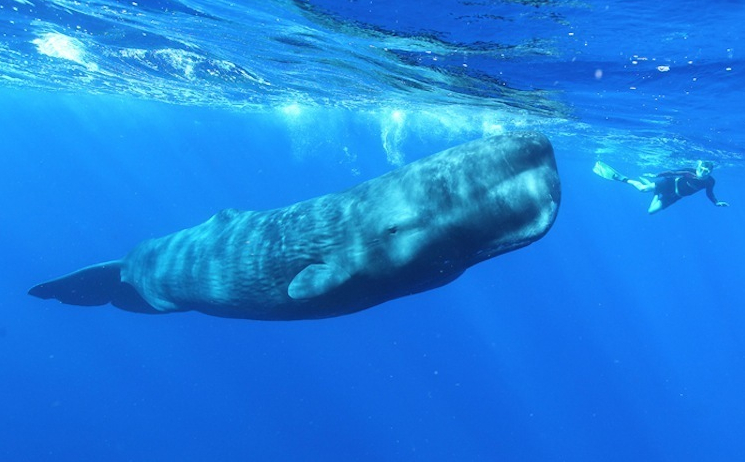
Sperm whales' heads are filled with a mysterious substance called spermaceti. Scientists have yet to understand its function, but believe it may help the animal regulate its buoyancy. They have the largest brain of any creature known to have lived on Earth.

The International Union for Conservation of Nature (IUCN) regards the sperm whale as being "Vulnerable".The species is listed as endangered under the United States Endangered Species Act. [1.14]
15) Orca Or Killer Whale - Orcinus Orca
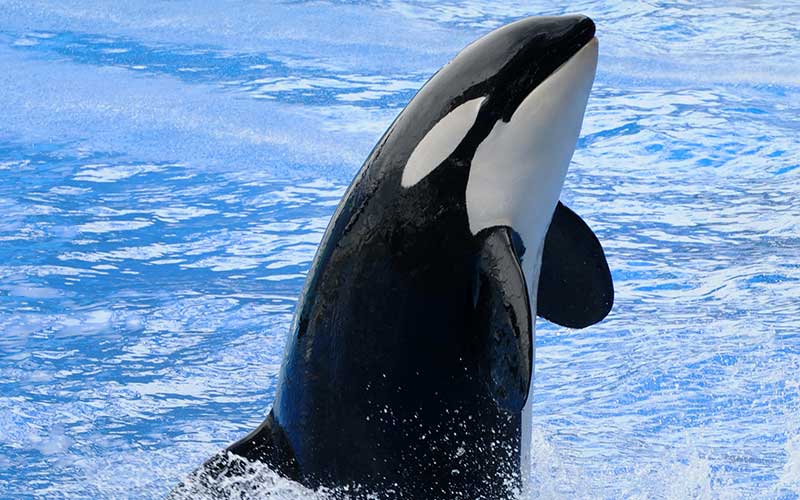
The killer whale or orca (Orcinus orca) is a toothed whale belonging to the oceanic dolphin family, of which it is the largest member. Killer whales have a diverse diet, although individual populations often specialize in particular types of prey. Some feed exclusively on fish, while others hunt marine mammals such as seals and dolphins.

In 2008, the IUCN (The International Union for Conservation of Nature) changed its assessment of the killer whale's conservation status from conservation dependent to data deficient, recognizing that one or more killer whale types may actually be separate, endangered species. [1.15]
16) Beluga Whale - Delphinapterus Leucas
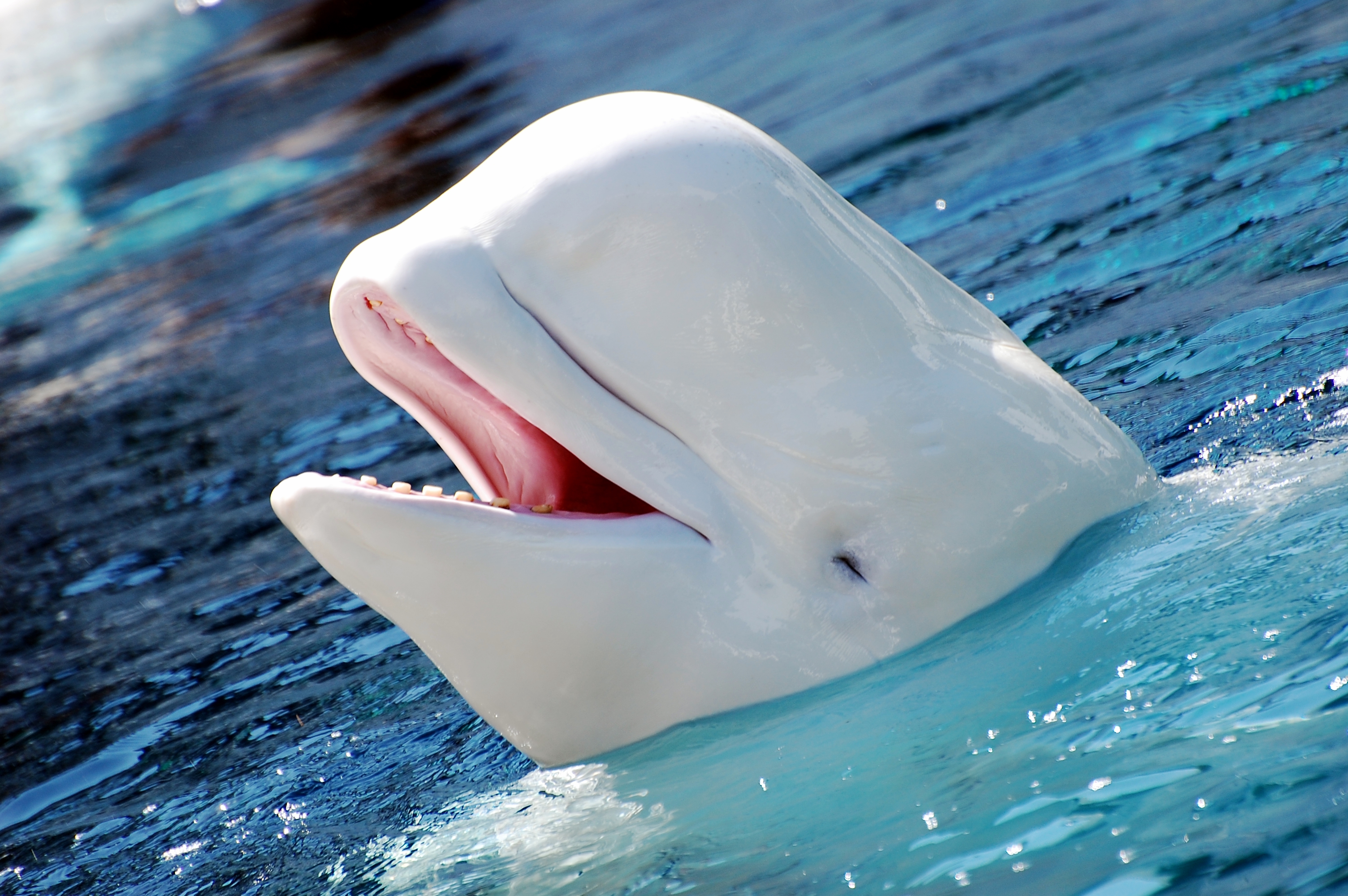
The beluga whale or white whale (Delphinapterus leucas) is an Arctic and sub-Arctic cetacean. It is one of two members of the family Monodontidae, along with the narwhal, and the only member of the genus Delphinapterus. This marine mammal is commonly referred to as the beluga, melonhead, or sea canary due to its high-pitched twitter.

As of 2008, the beluga is listed as "near threatened" by the IUCN due to uncertainty about threats to their numbers and the number of belugas over parts of its range (especially the Russian Arctic), and the expectation that if current conservation efforts cease, especially hunting management, the beluga population is likely to qualify for "threatened" status within five years. Prior to 2008, the beluga was listed as "vulnerable", a higher level of concern. [1.16]
17) Bottlenose Dolphin - Tursiops Truncatus
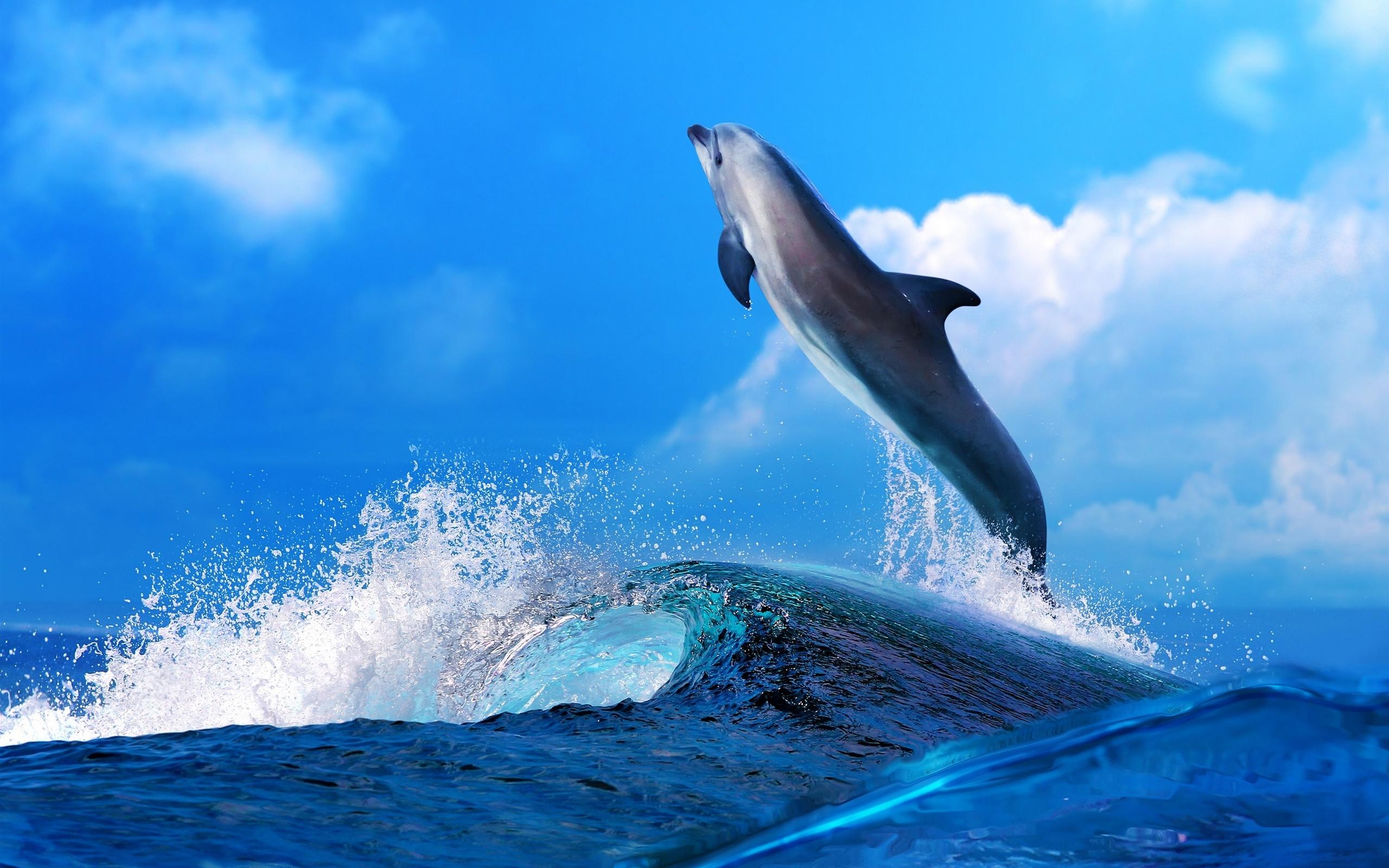
The bottlenose dolphin is one of the most well known species of marine mammals. They have a robust body and a short, thick beak. Their coloration ranges from light gray to black with lighter coloration on the belly. Inshore and offshore individuals vary in color and size. Inshore animals are smaller and lighter in color, while offshore animals are larger, darker in coloration and have smaller flippers.

Bottlenose dolphins are of least concern according to the IUCN Redlist. Their future is stable because of their abundance and adaptability. However, specific populations are threatened due to various environmental changes. [1.17]
18) Risso's Dolphin - Grampus Griseus
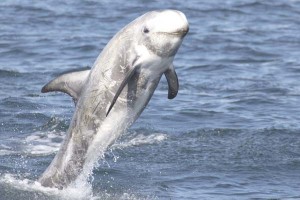
Risso's dolphins, sometimes called "gray dolphins," have a robust body with a narrow tailstock. These medium sized cetaceans can reach lengths of approximately 8.5-13 feet (2.6-4 m) and weigh 660-1,100 pounds (300-500 kg). Males and females are usually about the same size. They have a bulbous head with a vertical crease, and an indistinguishable beak.

The IUCN Red list conservation status of Risso’s dolphin is “Least Concern” [1.18]
19) Pygmy Sperm Whale - Kogia Breviceps
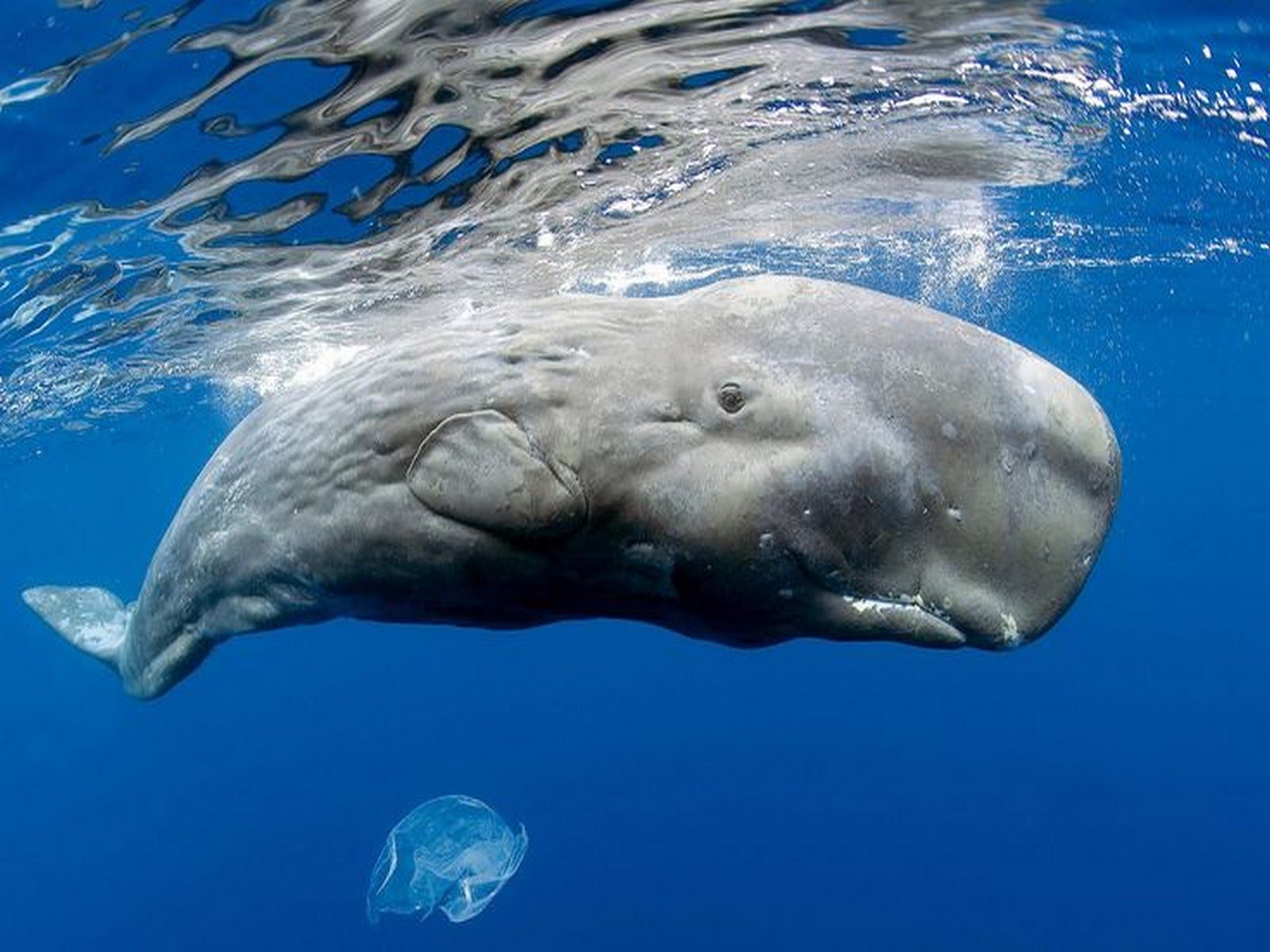
Pygmy sperm whales are small members of the toothed whale group, and one of two species in the family Kogiidae.

Pygmy’s IUCN Status is “Data Deficient” [1.19]
20) Narwhal - Monodon monoceros
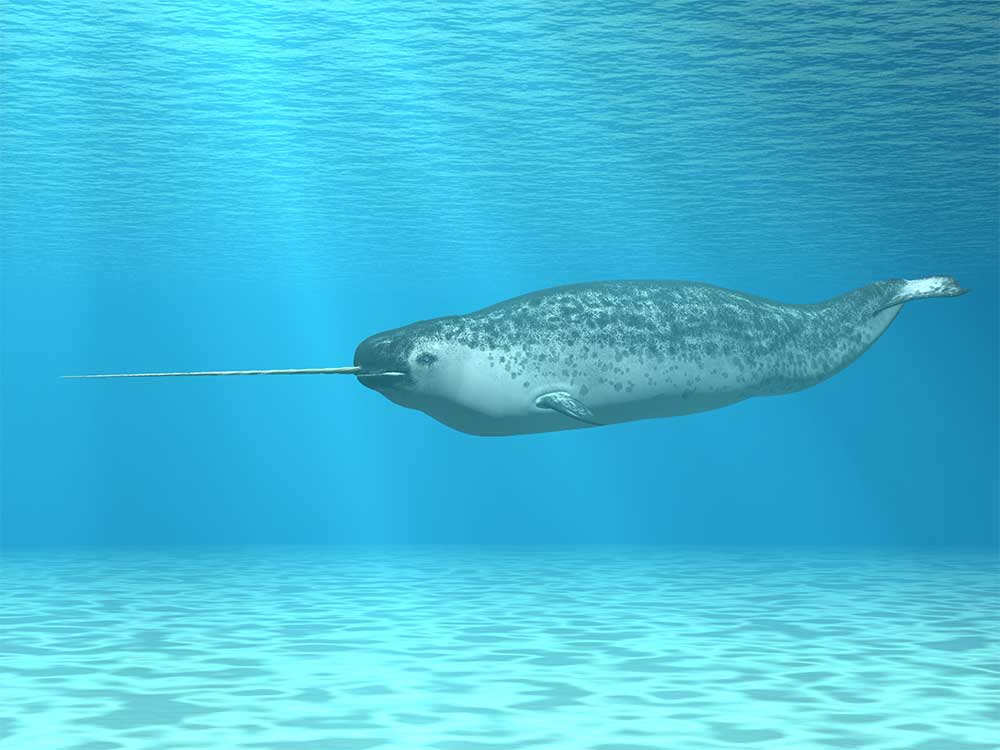
The narwhal (Monodon monoceros) is famous for the long ivory tusk that spirals counterclockwise up to 9 feet forward from the head of adult males. Hundreds of years ago, those tusks were thought by some to have magical properties.

Narwhals are one of many mammals that are being threatened by human actions. The world population of narwhals is currently estimated to be around 50,000. They are considered to be near threatened and several subpopulations have evidence of decline. [1.20]
Popular Posts
10 Biggest Water Dinosaurs & Sea Monsters Ever Found in Archaeology
The present-day ocean is certainly a scary place where giant sharks, whales, squids, barracuda, and numerous other marine creatures live.
Kimberly Campbell
6 Amazing Things We Should Learn From Camel Feet
Camels are a kind of mammals with the humped back, long legs, and lipped snout. They were domesticated nearly 3000 years ago are still used for transportation.
Kimberly Campbell
80 Most Popular Long Neck Dinosaurs Ever Recorded in History
Do you know the largest creatures ever walk on the earth were the long tailed and long neck dinosaurs which were called as Sauropods?
Kevin Green








